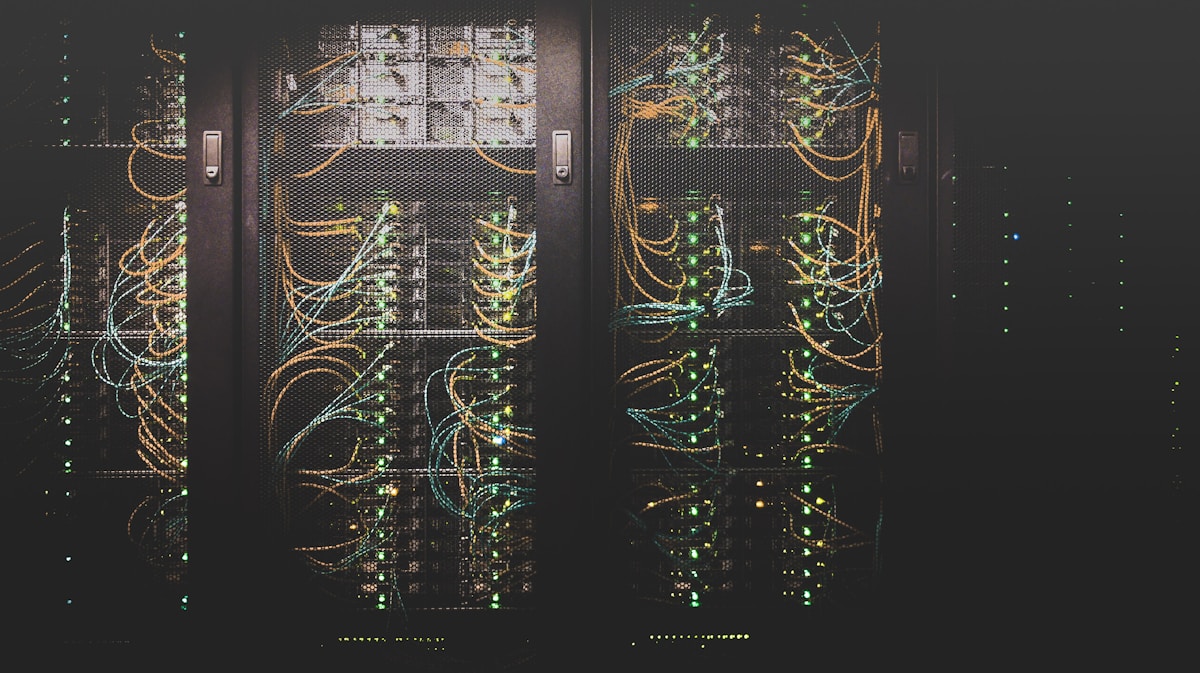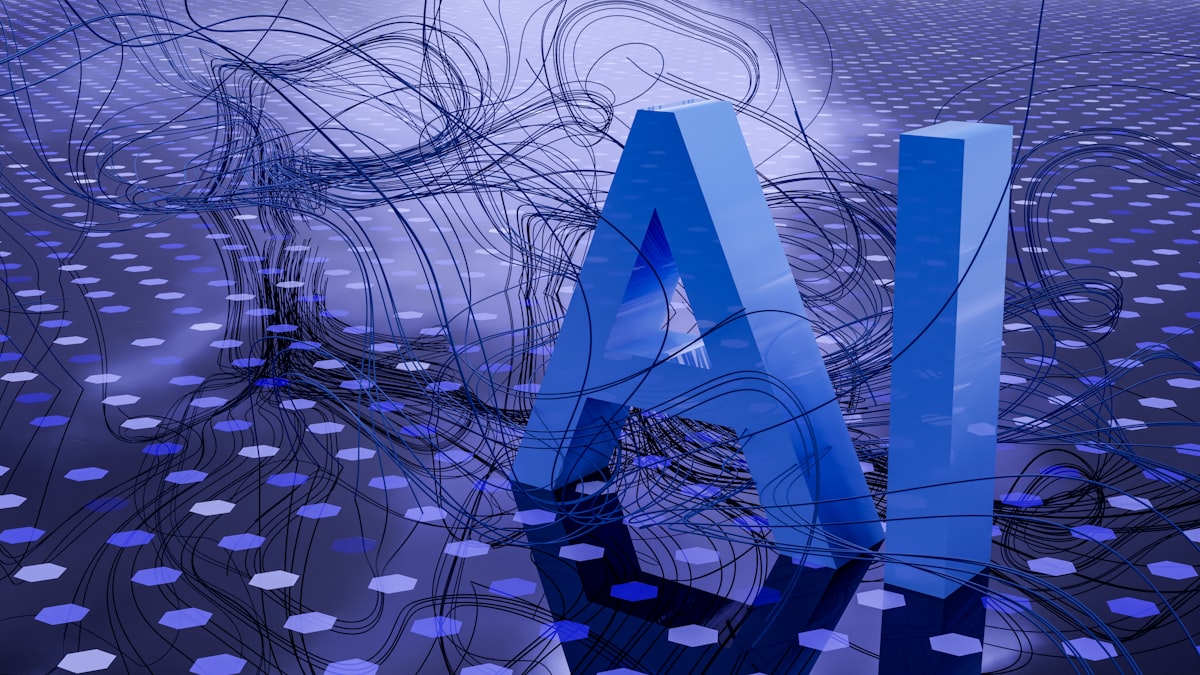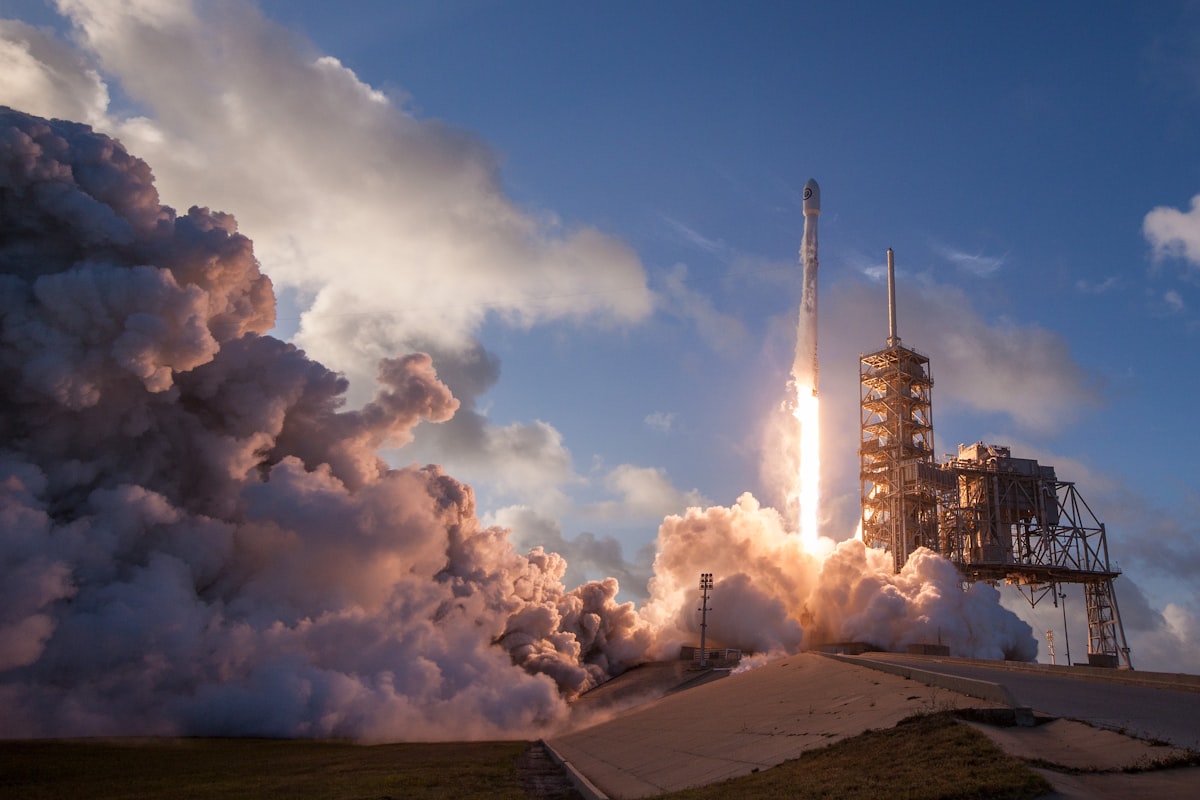
OpenAI AWS Partnership Explained: The $38B Deal That's Reshaping AI
Jean Louis
OpenAI just signed a $38B deal with AWS, breaking Microsoft's AI monopoly. Here's what this means for ChatGPT, the AI industry, and you.
OpenAI AWS Partnership Explained: The $38B Deal That's Reshaping AI
On November 3, 2025, OpenAI announced a deal that sent shockwaves through the tech industry: a $38 billion, seven-year partnership with Amazon Web Services (AWS). This isn't just another cloud computing contract—it's a strategic pivot that fundamentally changes the AI infrastructure landscape and signals the end of Microsoft's exclusive relationship with the company behind ChatGPT.
If you're wondering what this means for ChatGPT, why OpenAI is "breaking up" with Microsoft, and how this affects the future of AI, this guide breaks it all down in plain English.
- The Deal: OpenAI commits $38 billion to AWS over 7 years
- What OpenAI Gets: Hundreds of thousands of Nvidia GPUs (GB200/GB300 series)
- Timeline: Immediate deployment starts, full capacity by end of 2026
- The Big News: Microsoft's exclusivity with OpenAI just ended
- Why It Matters: Multi-cloud strategy means faster AI development and less vendor lock-in
Looking for more ai & machine learning recommendations? Check out our comprehensive guide: ChatGPT vs Claude vs Gemini: The Ultimate 2025 AI Showdown
What Is the OpenAI AWS Deal?
The Numbers
$38 billion over seven years makes this one of the largest cloud computing contracts in history. To put that in perspective:
- That's roughly $5.4 billion per year
- More than most countries spend on their entire tech infrastructure
- Enough to buy over 38 million top-tier consumer GPUs (if they were available)
But OpenAI isn't buying consumer hardware—they're getting access to Amazon's massive data centers packed with cutting-edge Nvidia chips.
The Hardware: Nvidia's Latest GPUs
OpenAI will immediately tap into hundreds of thousands of Nvidia graphics processing units (GPUs), specifically:
- Nvidia GB200 (Blackwell generation): The latest AI training chips
- Nvidia GB300 series: Next-generation inference accelerators
- Amazon EC2 UltraServers: Custom-built clusters optimized for AI workloads
These aren't your gaming PC GPUs. A single Nvidia GB200 cluster can cost millions of dollars and deliver performance that makes consumer hardware look like a calculator.
What Will OpenAI Use This For?
The infrastructure will power:
- ChatGPT inference: Serving billions of queries to users worldwide
- Model training: Building GPT-5, GPT-6, and beyond
- Research projects: Experimental AI systems and safety testing
- Enterprise services: Business-focused AI tools and APIs
Why Did OpenAI Choose AWS? (The Microsoft Breakup)
The Microsoft Era (2019-2025)
For years, OpenAI and Microsoft were inseparable:
- 2019: Microsoft invested $1 billion in OpenAI
- 2023: Microsoft invested another $10 billion
- Total investment: Over $13 billion, making Microsoft OpenAI's largest backer
Microsoft Azure was OpenAI's exclusive cloud provider—every ChatGPT query, every model trained, ran on Microsoft's infrastructure.
The Breakup: What Changed?
Last week (late October 2025), Microsoft's preferential status expired. Under newly negotiated commercial terms, OpenAI gained the freedom to partner with other cloud providers.
Almost immediately, OpenAI announced:
- $38 billion AWS deal (this partnership)
- Continued relationship with Oracle (announced earlier in 2025)
- $250 billion additional commitment to Microsoft (yes, they're still together, just not exclusive)
Why AWS Over Staying Microsoft-Only?
1. Capacity Constraints
No single cloud provider can meet OpenAI's massive compute demands. Training frontier AI models requires:
- Tens of thousands of GPUs running simultaneously
- Months of continuous operation
- Exabytes of data storage
By going multi-cloud, OpenAI ensures they never run out of compute capacity—if Microsoft's data centers are at capacity, they can spin up workloads on AWS.
2. Geographic Expansion
AWS operates data centers in more regions than Microsoft Azure, including:
- Better coverage in Asia-Pacific
- More edge locations for faster response times
- Compliance with local data residency laws
3. Negotiating Leverage
When you're spending $38 billion, you want competitive pricing. By playing AWS against Microsoft, OpenAI can negotiate better rates from both providers.
4. Technical Diversity
Different cloud providers offer different strengths:
- AWS: Best-in-class infrastructure, largest cloud provider
- Microsoft Azure: Deep AI integration, enterprise focus
- Oracle: High-performance networking for training
OpenAI can choose the right tool for each job.
What This Means for ChatGPT Users
Will ChatGPT Get Faster?
Yes, likely. More compute capacity means:
- Reduced wait times during peak usage
- Faster response generation for complex queries
- Higher availability (fewer "ChatGPT is at capacity" errors)
Will ChatGPT Get Smarter?
Absolutely. Access to hundreds of thousands of GPUs accelerates:
- GPT-5 development: More training compute = better models
- Multimodal capabilities: Improved vision, audio, and video processing
- Specialized models: Industry-specific AI tools
Will ChatGPT Cost More?
Unlikely for consumers. The $38 billion is an infrastructure investment, not a price hike. In fact, economies of scale might reduce costs over time.
For enterprise customers, pricing depends on competitive cloud rates—which should improve with multi-cloud leverage.
The Bigger Picture: Multi-Cloud AI Strategy
The End of Vendor Lock-In
Historically, companies picked one cloud provider and stuck with them. OpenAI's multi-cloud approach signals a new era:
- No single point of failure: If AWS goes down, Microsoft picks up the slack
- Workload optimization: Route inference to AWS, training to Microsoft, research to Oracle
- Cost optimization: Use whoever offers the best deal for each task
Industry Impact
Other AI companies are watching closely:
- Anthropic (Claude): Already multi-cloud with AWS and Google Cloud
- Google DeepMind: Exclusively on Google Cloud (for now)
- Meta AI: Building private data centers (expensive but independent)
Expect more AI giants to adopt multi-cloud strategies in 2026.
Winners and Losers
Winners
1. Amazon (AWS)
AWS was perceived as "losing" the AI cloud race to Microsoft. This $38 billion deal:
- Validates AWS as a premier AI infrastructure provider
- Generated an estimated $100 billion stock market surge for Amazon
- Positions AWS to compete for other AI giants (Anthropic, Cohere, etc.)
2. Nvidia
Every major AI deal involves Nvidia GPUs. This partnership:
- Solidifies Nvidia's AI chip monopoly
- Added nearly $100 billion to Nvidia's market cap in days
- Ensures continued demand for GB200/GB300 chips through 2027
3. OpenAI
By diversifying infrastructure, OpenAI gains:
- Unlimited scaling potential
- Better pricing leverage
- Faster time-to-market for new models
Losers
1. Microsoft (Sort Of)
While Microsoft still gets $250 billion from OpenAI, they:
- Lost exclusivity (their biggest advantage)
- Face increased competition from AWS
- Must work harder to justify premium pricing
2. Smaller Cloud Providers
Google Cloud, Oracle, and others struggle to compete with AWS's scale and Microsoft's AI partnerships. The big get bigger.
3. AMD and Intel
Despite efforts to break into AI chips, Nvidia's dominance remains unchallenged. This deal cements their lead through at least 2027.
Timeline: How We Got Here
- 2019: Microsoft invests $1 billion in OpenAI, becomes exclusive cloud partner
- 2022: ChatGPT launches on Microsoft Azure, becomes viral sensation
- 2023: Microsoft invests additional $10 billion, deepens partnership
- Early 2025: OpenAI signs cloud deal with Oracle, testing multi-cloud
- October 2025: Microsoft's exclusivity clause expires
- November 3, 2025: OpenAI announces $38 billion AWS partnership
- 2026-2027: Full AWS capacity deployment, OpenAI runs on three clouds simultaneously
What Happens Next?
Immediate (2025-2026)
- Q4 2025: OpenAI begins migrating workloads to AWS
- Q1 2026: First GPT models trained partially on AWS infrastructure
- End of 2026: Full 100% of committed AWS capacity operational
Medium-Term (2027-2028)
- Multi-cloud optimization: Intelligent routing of queries to cheapest/fastest provider
- GPT-5 and beyond: Next-generation models leveraging combined AWS+Azure+Oracle compute
- Geographic expansion: ChatGPT available in more countries with local data residency
Long-Term (2029+)
- Possible private data centers: If OpenAI follows Meta's playbook, they may build their own
- Edge computing: ChatGPT running on local servers for ultra-low latency
- Quantum-classical hybrid: Combining cloud GPUs with quantum processors (speculative)
The Bottom Line: Control Over Compute Is Control Over AI
This deal isn't just about cloud servers and GPUs—it's about who controls the future of artificial intelligence.
In the next phase of AI competition:
- Compute is power: The more GPUs you have, the better models you can build
- Flexibility is survival: Single-cloud dependency is a strategic weakness
- Scale wins: Only companies spending tens of billions can compete at the frontier
OpenAI's $38 billion bet on AWS (plus $250 billion on Microsoft) proves that building cutting-edge AI requires infrastructure investments larger than most companies' entire market caps.
For users, this means:
- Better AI tools: More compute = smarter, faster models
- Higher reliability: Multi-cloud redundancy prevents outages
- Continued innovation: OpenAI can push boundaries without infrastructure limits
Frequently Asked Questions
Is OpenAI leaving Microsoft?
No. OpenAI is spending $250 billion additional with Microsoft. They're ending exclusivity, not the partnership.
Will ChatGPT be rebranded to use Amazon's name?
No. This is an infrastructure deal. ChatGPT remains ChatGPT, powered by multiple clouds behind the scenes.
Does this affect ChatGPT Plus subscriptions?
No. Pricing and features for consumer subscriptions remain unchanged.
Can I choose which cloud powers my ChatGPT queries?
No. OpenAI will route queries automatically based on load, latency, and cost.
Is this the biggest cloud deal ever?
One of the largest. Only a few enterprise contracts exceed $38 billion (some government and telecom deals).
Final Thoughts
The OpenAI-AWS partnership marks a turning point in AI infrastructure. Just as the internet evolved from single-provider hosting to distributed cloud computing, AI is evolving from single-cloud to multi-cloud architectures.
For OpenAI, this means freedom to scale without limits. For Microsoft, it's a wake-up call that exclusivity clauses don't last forever. For AWS and Nvidia, it's a massive validation of their AI strategies.
And for us? It means the AI tools we use daily—ChatGPT, DALL-E, and future innovations—will keep getting faster, smarter, and more reliable.
The AI race just got a $38 billion turbocharge.
Related Articles

ChatGPT vs Claude vs Gemini: The Ultimate 2025 AI Showdown
Complete comparison of ChatGPT, Claude, and Gemini in 2025. Discover which AI is best for coding (Claude 4), research accuracy (ChatGPT leads at 60%), multimodal tasks (Gemini 2.5), pricing, features, and real-world use cases. Plus: Claude has 400M users, while ChatGPT introduced killer Memory feature.

SpaceX Starship: First Mars Mission in 2026, Humans by 2028 (Maybe)
Elon Musk reveals ambitious SpaceX Starship timeline: uncrewed Mars mission in 2026, humans landing by 2028. Explore the latest Starship V3 developments, successful test flights, and the 50/50 odds of making history in the race to Mars.

Tesla Model Y Breaks Sales Records While Cybertruck Struggles: The EV Market in 2025
Tesla Model Y achieves record-breaking 114,897 units sold, becoming the best-selling EV in the U.S., while Cybertruck faces a 63% sales decline. Explore lease pricing changes, upcoming features like V2L technology, and what this means for the electric vehicle market in 2025.
Written by
Jean Louis
Tech enthusiast and professional developer sharing insights on modern web development.
Comments (0)
Join the discussion and share your thoughts
You must be logged in to post a comment.
Sign In to CommentNo comments yet. Be the first to share your thoughts!